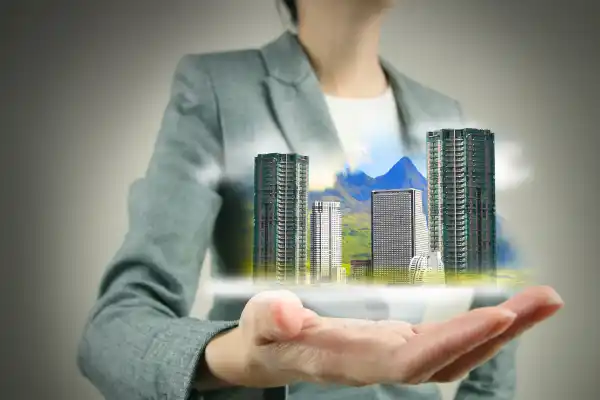Investing in commercial properties in the United Kingdom offers a unique blend of opportunities and challenges, making it a popular topic for investors looking to diversify their portfolio. The potential for lucrative returns is evident, but it requires a deep understanding of the market dynamics. The commercial real estate sector in the UK ranges from office spaces and retail units to logistics centres and hospitality venues, each with its own set of dynamics and nuances.
Understanding these intricacies is vital for attaining success in this field. This blog post aims to explore the various aspects of investing in UK commercial properties, focusing on the associated risks and the potential rewards that make it an attractive proposition for many investors.
Understanding the commercial property market

The first step in investing in UK commercial real estate is understanding the market. The landscape for commercial properties is diverse and constantly changing, influenced by economic trends, government policies, and societal shifts. For example, the rise of e-commerce has reshaped the demand for retail spaces and logistics facilities.
Similarly, work-from-home practices have impacted the office space market. Understanding these influences is crucial for identifying lucrative opportunities and making informed investment decisions. Location is another critical factor, often influencing rental yields and property valuations. Properties in major cities like London and Manchester tend to offer higher returns but also come with increased competition and price volatility.
Types of commercial properties
The UK commercial property market offers various asset types, each with its own risks and rewards. Office spaces are traditionally popular, attracting businesses seeking attractive leases. Retail units, often situated in high-traffic areas, are highly dependent on consumer spending and economic conditions.
The industrial sector, including warehouses and distribution centres, has been particularly buoyant, driven by the rise of online shopping. Hospitality properties such as hotels and serviced apartments offer potential for high returns but are susceptible to economic downturns and changing travel trends. Each asset type requires specific considerations, with differing capital requirements, management needs, and market dynamics that investors must carefully evaluate.
Market trends and indicators
Investors must stay attuned to emerging trends and market indicators to successfully navigate the UK’s commercial property market. Economic stability, interest rates, and inflation are macroeconomic factors that influence property values and yields. Additionally, technological advancements, such as smart building technologies and green initiatives, are reshaping the expectations and demands placed upon commercial real estate.
Understanding these patterns can help investors pinpoint growth areas and avoid potential pitfalls. Furthermore, engaging with local market reports, real estate data, and expert analysis provides a broader perspective on regional trends and emerging opportunities in the commercial property landscape across various localities in the UK.
Weighing the rewards and risks
The potential rewards of investing in commercial properties in the United Kingdom can be substantial. High rental yields, capital appreciation, and long-term income streams make commercial real estate an attractive investment. However, these benefits must be weighed against inherent risks.
Economic volatility can affect occupancy rates and property values, leading to fluctuating income and potential financial strain. Additionally, market saturation in certain areas can lead to increased competition and reduced profitability. Understanding the local economic climate, business environment, and demographic trends is essential for mitigating these risks and ensuring sustainable returns on investment.
Economic conditions and their impact
An investor in UK commercial properties must consider various economic conditions. Interest rates significantly impact borrowing costs and can influence the overall profitability of property investments. Inflation rates also play a role, affecting construction costs and rental income growth. The broader economic climate, including GDP growth, unemployment rates, and consumer confidence, impacts tenant demand and lease terms.
During economic downturns, commercial properties may experience increased vacancy rates, while strong economic performance often leads to heightened demand and increased rental yields. Therefore, an understanding of the economic environment is critical for predicting how these factors may affect future profitability.
Regulatory and legal considerations
When investing in commercial properties in the UK, understanding the regulatory and legal landscape is crucial. These frameworks affect everything from property acquisition and development to leasing and tax obligations. Planning permissions, zoning laws, and building regulations impact the feasibility and cost of property development.
Additionally, landlord responsibilities and tenant rights governed by UK laws ensure fair leasing practices but also impose additional obligations on property owners. Staying informed about any changes in legislation, such as tax reforms or environmental policies, helps investors navigate potential legal challenges and enhance their investment strategies to maximize returns while ensuring compliance and sustainable growth in the commercial property market.




